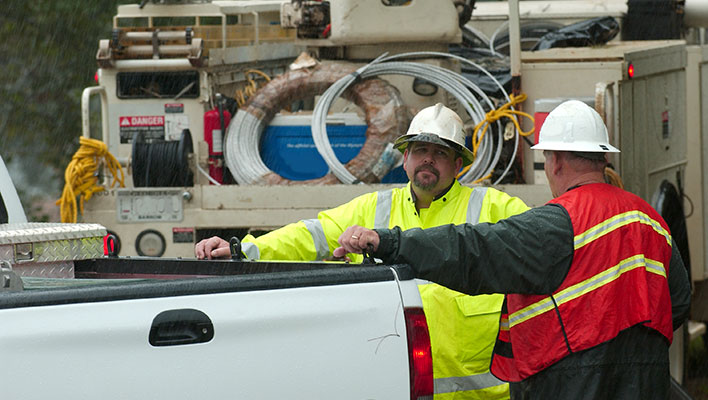So far, this year’s Hurricane Season has seen an uptick in named storms but thanks to early forecasting, a group of experienced utilities, crews, and software automation, responding, restoring, and reporting has not been an issue. Solutions like ARCOS Callout, Crew Manager, Damage Assessment and Mobile Workbench have made sure that work is identified quickly by crews (internal, contractor, and USP), they are safely dispatched to where they need to be and work tickets are completed so they can move on to the next clean-up or restoration job. Contact ARCOS to learn more about this process and how the Resource Management Platform can also help with FEMA reimbursement.
Hurricane Season is with us until November 30th. Let’s hope the worst is already behind us. With four months to go, we’re proud to stand with utility crews who must be ready for anything.
The 2021 Hurricane Season has been a dynamic one, but has it matched up to forecaster’s predictions as being one the most active seasons in history? Do we need to worry about dodging bullets or putting contractors, utility service providers, and mutual assistance partners on stand-by? Let us review the season so far and put the storms into perspective.
Tropical Storm Ana
Technically, this year’s hurricane season started a week early. On May 19th, radar and satellite imagery discovered the first 2021 tropical storm tracked by the National Hurricane Center. It formed near Bermuda and by May 22, developed into a named storm called “Ana”. However just 24 hours later, Ana weakened while at sea and was downgraded. Ana made 2021 the seventh year in a row that a named stormed has formed before the start of the season.
Tropical Storm Bill
The National Hurricane Center started tracking a new tropical storm off the North Carolina coast on June 13th. It was named “Bill” a day later and brutalized the northeast Atlantic coastline with 45 mph winds before moving out to sea. In more than 70 years, Ana and Bill mark only the eighth time that two named storms have developed this early in a season.
Tropical Storm Claudette
On June 11th, the Gulf of Mexico was being watched by the NHC and sure enough, they saw Tropical Storm Claudette mass into her final form on June 19th. When she made landfall, Claudette aimed for New Orleans and then traveled northeast. As she traveled through the south, the torrential downpours and winds caused massive damage in Alabama. Claudette eventually lost her energy but started to refuel as she crossed over North Carolina before quietly dissipating. The damage she caused is estimated to be at $100 million.
Tropical Storm Danny
Savannah, Georgia was the next locale for a storm to form. The NHC started watching a tropical depression on June 27th, and 24 hours later, they found it had increased enough to be named Tropical Storm Danny. Danny blew into Hilton Head, South Carolina with 40 mph winds. Danny weakened quickly and was gone after another 24 hours.
Hurricane Elsa
Hurricane Elsa has been the biggest storm of the season so far. The NHC started tracking her on June 30th. As she gathered strength, Elsa became a named storm on July 2nd. She moved between Haiti and Jamaica a day later, then on to Cuba, the Florida Keys and Tampa Bay. Elsa was particularly pesky because she kept losing and regaining power, which fueled flooding in the Mid-Atlantic and northeastern United States. Elsa lost strength over New England after delivering around $290 million in estimated damages.
Loading the Deck in Our Favor
So far, this year’s Hurricane Season has seen an uptick in named storms but thanks to early forecasting, a group of experienced utilities, crews, and software automation, responding, restoring, and reporting has not been an issue. Solutions like ARCOS Callout, Crew Manager, Damage Assessment and Mobile Workbench have made sure that work is identified quickly by crews (internal, contractor, and USP), they are safely dispatched to where they need to be and work tickets are completed so they can move on to the next clean-up or restoration job. Contact ARCOS to learn more about this process and how the Resource Management Platform can also help with FEMA reimbursement.
Hurricane Season is with us until November 30th. Let’s hope the worst is already behind us. With four months to go, we’re proud to stand with utility crews who must be ready for anything.




